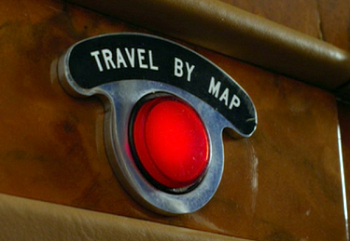The Best International Road Trips [Plus a Car Maintenance Checklist]

May 29, 2019
A road trip, in your own car or in a rental vehicle, is one of the best ways to thoroughly explore a destination, try something new, challenge yourself, visit amazing places, meet new people, and create lasting memories.
Not that long ago, we wrote about taking the ultimate American road trip.
But if the over 4 million miles of public roadway (including scenic coastal roads, windy mountainous routes, and historic stopping points) in the United States isn’t enough for you, how about an international road trip?
The list below contains some A+ collections of international road trip ideas as well as some important items you’ll want to consider when preparing your car for a road trip abroad.
Where to go: the most awesome road trip ideas
Bookmundi:
Bookmundi lists 15 road trips that span the globe and almost every continent, giving highlights of each trip, an idea of distance and duration, where to start and end your trip, general road conditions, and the best times of the year to go on each trip. There’s even a navigation panel on the right of the page that provides quick access to each trip if you want to skip the scrolling.
Conde Nast Traveler:
Why not ask the experts? And that’s exactly what Conde Nast Traveler did - they had their travel editors identify their favorite international road trips. This collection provides an amazing selection and variety of road trip ideas.
The Planet D:
The Planet D is a travel blog run by wife and husband team, Deb and Dave. They’ve seemingly traveled everywhere and written about their adventures. So enjoy this list they’ve compiled of their absolute favorite road trips! As a bonus, each road trip links to a more complete blog about that particular trip, including photos of things to do and places to see while on the road.
Travel Channel:
Iceland, specifically the country’s 828-mile Ring Road, is consistently listed on travel websites as a favorite road trip. The Travel Channel starts its “10 best” road trips list with this pick and continues with another nine tantalizing adventures. A simple list, but thorough.
Fodors:
Reading these beautiful descriptions of 20 international road trips will make you want to immediately grab your passport and get moving. This list also includes some unique road trip ideas, such as the Guoliang Tunnel Road in the Taihang Mountains of China and Salar de Uyuni in Bolivia.
CNN Travel:
CNN Travel includes Route 62 in South Africa on their list of the top 10 road trips worldwide, as well as Ticlio Pass in Peru, the Alcan Highway from Canada to Alaska, and Romania’s Transfagarasan Road. Each road trip idea includes the length (distance and approximate travel time) of the trip, highlights, and ideas for places at which to stop and eat.
Travel + Leisure:
Travel + Leisure offers not only a list of European road trips, but information on renting cars while overseas and packing ideas for international road trips.
Prepping your car for a road trip

Chances are good that you’ll be renting a car for any international road trip that you take; but, rented or owned, you’ll still want to do a quick mechanical check of your vehicle before you hit the road. Weeks or months of travel planning can quickly come undone if your car breaks down and you’re stranded in an unfamiliar country.
Engine coolant/antifreeze
Antifreeze and engine coolant are used to prevent the engine from overheating and oil from forming a solid or gas. Check your service manual for specifics, but coolant (a mixture of antifreeze and water) is usually either added to the cooling system through a remote reservoir or added directly to the radiator. The coolant then continuously circulates through the engine and back through the radiator, absorbing and transferring heat in the process. Antifreeze regulates the engine’s temperature by lowering the freezing point and raising the boiling point of the radiator fluid, protects against rust and corrosion, and lubricates moving parts in the cooling system. Over time, engine coolant can become contaminated or lose potency, resulting in inefficient engine cooling. Check your engine coolant, top if off if necessary, and flush the system at regular intervals (refer to your vehicle’s service manual for scheduled maintenance).
Engine oil
Clean engine oil is critical to lubricate moving components and reduce friction. While you probably have a good idea of how often your own vehicle needs an oil change, make sure you check the owner’s manual of any vehicle that you’re renting for its specific information and schedule.
Brake fluid
Flush and change your brake fluid if it’s been more than two or three years since it’s last inspection. Your vehicle’s maintenance schedule (found in the owner’s manual) should provide clear guidelines regarding all fluid maintenance, including frequency of changing brake fluid and types of brake fluid to use. Signs that the brake system may need a flush include the brake pedal feeling spongy when depressed, reduced brake performance, and black or brown discoloration of the the brake fluid.
Power steering fluid
Power steering fluid can easily be overlooked when thinking about car maintenance. But, like all other fluids in your car or truck, power steering fluid - which allows your steering wheel to turn easily at all speeds - needs to be periodically checked and replaced as it gets older. Noises from the power steering pump, difficulty turning the steering wheel at lower speeds, and dark discoloration of the fluid are all signs that the power steering fluid may need changing. The vehicle’s service manual will provide more recommendations specific to your car or truck regarding when to change the power steering fluid and what formulation of fluid to use.
Transmission fluid
Transmission fluid requires changing less frequently than does engine oil, but it still needs to be monitored and changed. Transmission oil acts as both a lubricant and a hydraulic fluid - facilitating gear shifts, cooling the transmission, and lubricating moving parts. Many cars are sold today with “lifetime” transmission fluid, but all fluids breakdown over time and with use. Frequent stop-and-go city driving, towing heavy loads, and trailering are prime examples of types of driving that will put strain on the transmission. Check the service manual for transmission fluid change intervals.
Windshield washer fluid
You need a clean windshield in order to see where you’re driving. Refilling your windshield washer fluid is as easy as purchasing windshield washer fluid, opening your hood, finding your washer fluid reservoir, removing the cap, using a funnel to fill up the reservoir with the windshield washer fluid, putting the cap back on the reservoir, and closing your hood. That’s it - end of story.
Tire pressure and tread
Check your tire pressure regularly (every 1,000 miles or as needed) throughout your road trip. Tires are the only contact your car should have with the road. It is imperative for your safety and that of your passengers that your tires are properly inflated and in good condition. The National Highway Traffic Safety Administration has identified under-inflation as one of the leading causes of tire failure in the United States. Under-inflation causes too much of the tire’s surface area to be in contact with the road, which can increase friction and can cause the tire to overheat. This combination of low pressure, increased contact with the road surface, and overheating can then lead to premature tire wear, tread separation, and blowouts. A vehicle’s recommended tire pressure can be found in its owner’s manual as well as on the sticker locate on the driver-side door jamb. Check out our Tire and Wheel Repair section for additional advice and tips on tire care and maintenance.
Brake system
Brakes are the most important safety feature on a vehicle. Brakes should be inspected on a regular basis by a trusted repair facility - and should be thoroughly checked before a road trip. Have your mechanic check your vehicle’s brake pad and shoe thickness and wear, rotors for run out and hot spots, and hardware to make sure that it’s working properly and is properly adjusted. They should also make sure that the wheel cylinders, brake lines, and brake master cylinder aren’t leaking, inspect calipers for wear, and check the level and condition of the brake fluid. Not all aftermarket brake parts are made equally, but you can be guaranteed that all OEM brake parts are engineered to manufacturer-specified quality and safety standards.
Battery
On average, a car battery will last three to five years - but weather, driving habits, and other other factors can shorten battery life. Signs of a failing or bad car battery (other than your car not starting) include a slow cranking engine, a check engine light, or a rotten egg smell around the battery. Because most cars are dependent on steady current flow, any flashing light on your dashboard (from ABS to airbag sensor warnings) might also signify a bad battery. So, in summary, test your car battery before leaving on a road trip!
Questions about your car?
Whether you’re looking for car mats, brake system components, lock actuators, or simply OEM replacement wiper blades, you’ll find the OEM parts and accessories you need and the prices you want on TascaParts.com.
And, remember, if you need assistance ordering OEM parts or accessories email us at parts@tascaparts.com

